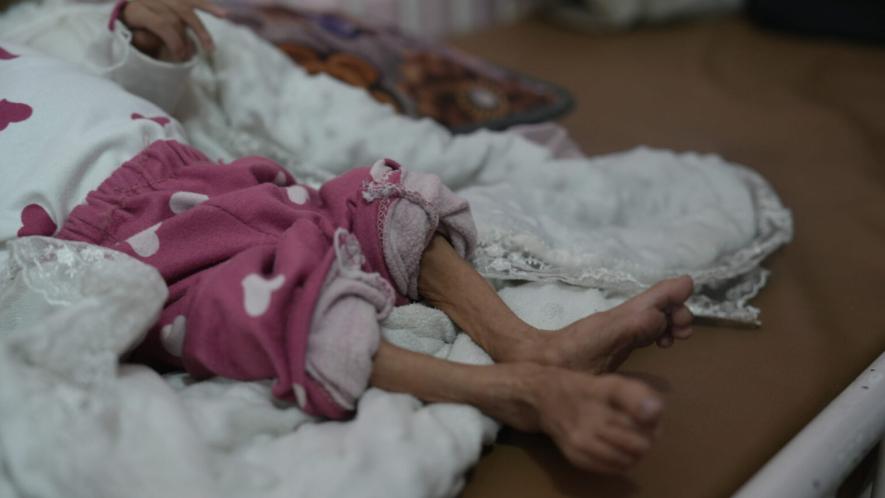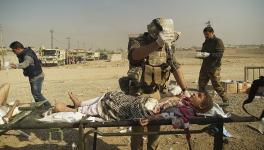Intergenerational Hunger: Effects of Israel’s Starvation of Gaza

Source: Medical Aid for Palestinians (MAP)
The extent of hunger and malnutrition in the Gaza Strip is worsening daily, with the United Nations warning that the entire under-five population – over 320,000 children – is now at risk of acute malnutrition due to Israel’s genocide. The hunger-related death toll continues to rise, as does the likelihood that famine is already present. “The fact that people continue to risk being shot or caught in stampedes at distribution sites indicates the extremely desperate level of hunger that the population is experiencing,” the Famine Review Committee stated in July.
Hunger is affecting all segments of the population: the Euro-Med Human Rights Monitor recently warned of at least 1,200 malnutrition-related deaths among the elderly. The most harrowing accounts, however, concern children. International NGOs like Save the Children have described this stage as the “starvation of children by design.” Gastrointestinal surgeon Nick Maynard stated: “I have had so many patients die because they can’t get enough food to recover. It’s distressing to see that and know that it’s preventable and treatable.”
“I saw a seven-month-old who looked like a newborn,” he added. “The expression ‘skin and bone’ doesn’t do it justice.”
The compounding effects of malnutrition in Gaza
The effects of hunger on children in Gaza are both immediate and long-lasting, says pediatrician Claudio Schuftan, a founding member of the People’s Health Movement (PHM). Different forms of malnutrition are widespread: chronic, acute, and micronutrient-related. Chronic malnutrition, especially among children under two, leads to stunted growth. “Because there aren’t enough calories, the body, being very wise, uses what little energy it has to maintain vital functions like breathing and regulating temperature. It diverts energy from growth, so children stop growing in length,” Schuftan explains.
If nutrition improves, the child resumes growing, but a permanent height deficit will likely persist. This form of malnutrition also impairs critical periods of brain development, meaning many children can miss key developmental milestones.
Acute malnutrition, another cause of the images of emaciated children circulating on social media, results in rapid weight loss or wasting. “You lose weight and become underweight for your age,” Schuftan says.
In Gaza, this is compounded by widespread micronutrient deficiencies. With shortages of fruits, vegetables, and supplements, iron deficiency is rampant, causing anemia and lethargy. “You see these children who are malnourished on TV, flies on their eyes and mouths,” he adds. “They don’t have the energy to brush them away.”
While many of these conditions can be treated if hunger is eliminated, others will persist throughout life. “A child malnourished and stunted at two years doesn’t remain that size forever. They will grow, but they will grow slower if the condition continues, or they will grow never making up for what they didn’t gain in that period,” Schuftan adds.
If, on the other hand, conditions continue to deteriorate, more children will die – not necessarily from hunger itself, but from its effects. “The episode that ultimately takes a child’s life is most often diarrhea, which is very difficult to treat unless there’s an opportunity to rehydrate the child urgently, or pneumonia, depending on the season,” Schuftan says. “In winter, it’s likely to be pneumonia, and given the lack of antibiotics in Gaza, we’re talking about pneumonia as it was before penicillin.”
A vicious cycle of intergenerational hunger
Malnutrition in Gaza begins before birth, as pregnant women themselves are undernourished. Unable to gain adequate weight during pregnancy, they give birth to underweight infants who cannot recover in famine conditions. “After delivery, the mother starts to produce milk. But no food means less milk,” Schuftan says. “The child begins to breastfeed, but very little comes out. Mothers would usually supplement with formula, but there is none. And when you mix formula with breastfeeding, it generally ends breastfeeding altogether.”
Israel’s blockade of Gaza thus creates a vicious cycle of intergenerational hunger. Even if food was made widely available overnight, recovery would have to be gradual. “If you suddenly feed a severely malnourished child, let’s say under two or three years old, they can get severe diarrhea and even die from it,” Schuftan warns. But convincing parents to go slowly when the child is crying and food is finally available is very hard, he points out.
Proper refeeding also requires functioning health facilities with staff who can rehydrate and monitor children over time. “These situations will happen, we will see these diarrhea cases,” Schuftan warns. “What that means is that at the same time that you bring food, you have to create health facilities with experienced staff.” Yet after nearly two years of Israeli attacks, Gaza’s health system lies in ruins. Hospitals have been bombarded, ambulances attacked, and health workers kidnapped, making it nearly impossible to guarantee even basic services.
“So many things have happened that you cannot separate nutrition from psychological damage or from the absence of schooling,” Schuftan says. “It’s a generation growing up with many injuries, including psychological ones. These children have been tremendously harmed.”
Still, PHM and other health organizations stress that they have the necessary expertise to rebuild if there is a ceasefire and justice for Palestine. “We will be dealing with the consequences of this catastrophe for a long time,” Schuftan says. “But we do have a chance, if this stops once and for all.”
People’s Health Dispatch is a fortnightly bulletin published by the People’s Health Movement and Peoples Dispatch. For more articles and to subscribe to People’s Health Dispatch, click here.
Courtesy: Peoples Dispatch
Get the latest reports & analysis with people's perspective on Protests, movements & deep analytical videos, discussions of the current affairs in your Telegram app. Subscribe to NewsClick's Telegram channel & get Real-Time updates on stories, as they get published on our website.
























